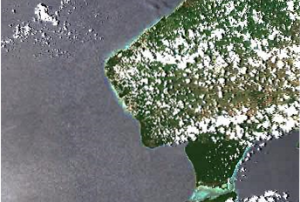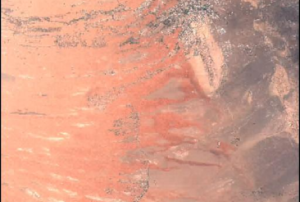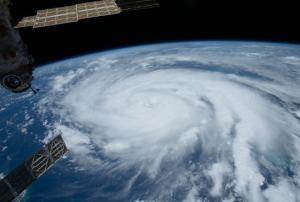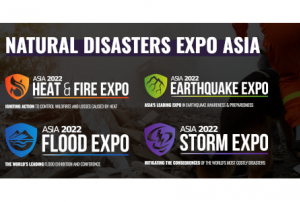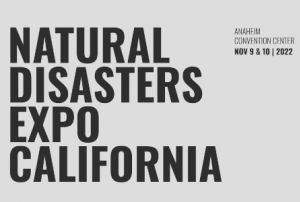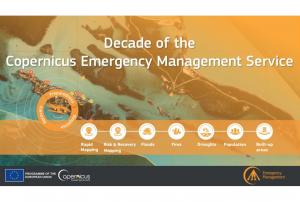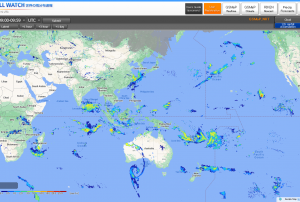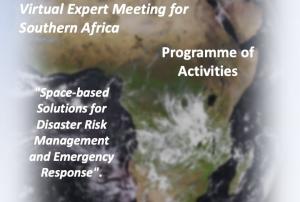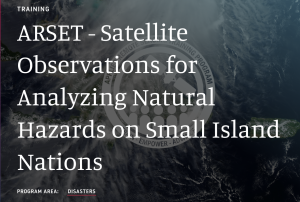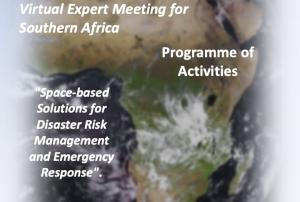Tormenta severa
Definition
Facts and figures
Further information
UN-SPIDER Regional Support Offices with hazard-specific expertise
Related content on the Knowledge Portal
Hurricane Fiona unleashed heavy rain on the Dominican Republic,as it made landfall on 19 September.
The storm displaced more than 12,400 people, caused landslides, fallen bridges, road blockages, power outages, interrupted telecommunications, and overflowing dams .
Authorities closed ports and beaches; a tourist pier in the town of Miches was badly damaged by high waves. At least four international airports were closed.
The Dominican Red Cross activated and deployed national teams to carry out sectoral assessments and interventions in health, water, sanitation and hygiene promotion and psychosocial support; especially in the provinces that were most impacted.
UNOOSA/UN-SPIDER requested the activation of the International Charter Space and Major Disasters on behalf of the National Emergency Commission of the Dominican Republic.
... read moreAt least nine people have died after tropical cyclone Shaheen battered Oman. The storm arrived in the area on Sunday, with winds between 120 and 150 km/h (75-93 mph) as its eye crossed land. Thousands have been evacuated from coastal areas and streets in the capital, Muscat, have been submerged. Infrastructure including electrical facilities and roads were damaged.
UNOOSA/UN-SPIDER requested the activation of the International Charter Space and Major Disasters on behalf of the Oman Civil Defense and Ambulance Authority. The Mohammad Bin Rashid Space Centre (MBRSC) of the United Arab Emirates served as a project manager.
read moreOrganization Title Product type... This article is republished from The Conversation under a Creative Commons license. Read the original article.
Authors: Zhe Zhu, University of Connecticut and Su Ye, University of Connecticut
Hurricane Ian left an extraordinarily broad path of destruction across much of South Florida. That was evident in reports from the ground, but it also shows up in satellite data. Using...
read more10/10/2022Consists of:
- Heat and Fire Expo Asia
- "The Heat and Fire Expo Asia is the innovative exhibition and conference designed to support the mitigation for one of the most costly natural disasters in the World by showcasing the latest revolutionary global solutions."
- Earthquake Expo Asia
- "The Earthquake Expo Singapore is the most innovative exhibition and conference dedicated to supporting the mitigation of one of the world’s most devastating natural disasters."
- Flood Expo Asia
- "The Flood Expo Asia is the ultimate innovative exhibition and conference designed specifically to support the mitigation of the most costly natural disasters in the region, by showcasing the global solutions available today that will...
- Heat and Fire Expo Asia
Consists of:
- Heat & Fire Expo
- "The Heat & Fire USA is the leading wildfire prep, management, and recovery event, showcasing the latest tools, strategies, and insights among investment and global industry leaders."
- Earthquake Expo
- "The Earthquake Expo USA is the leading seismic prep, management, and recovery event, showcasing the latest tools, strategies, and insights among investment and global industry leaders."
- Flood Expo
- "The Flood Expo USA is the leading flood prep, management, and recovery event, showcasing the latest tools, strategies, and insights among investment and global industry leaders."
- ...
- Heat & Fire Expo
Implementing science to save lives: A Decade of the Copernicus Emergency Management Service
The Copernicus Emergency Management Service (CEMS) celebrates a decade of operation as a world leader in emergency mapping, early warning tools and open-access disaster information.
For the past ten years, CEMS has provided a global service as a fully operation emergency mapping service at no cost to users and with open access data.
Some highlights on the contribution of CEMS in global disaster risk management activities:
- 576 Rapid Mapping Activations with 5,500+ maps delivered
- Designed and implemented the world’s first Global Flood Monitoring tool
- Ten years of wildfire forecasts up to ten days into the future
- Average of 200+ flood and 500+ flash flood notifications to Member States and authorised users each year
- Offers a current and historical database of 7,000+ drought episodes since 1950
...
read more22/06/2022- Publishing institution:
Space-based Solutions for Disaster Risk Management and Emergency Response for Southern Africa
UN-SPIDER and ZFL are holding a regional virtual expert meeting for Southern Africa, a region vulnerable to hydrometeorological, geological, coastal and biological hazards and gravely impacted by droughts in recent years.
The objectives of this regional virtual expert meeting are:
- To raise awareness regarding novel applications of satellite technologies in risk assessment, early warning systems, and disaster response operations;
- To survey and examine efforts carried out by risk and disaster management institutions in Southern African countries on the use of space technologies and space-based information in disaster risk management, preparedness, response and recovery efforts;
- To explore ways to enhance the use space technologies in disaster risk management and response and recovery applications in Southern Africa....
Small island nations are highly vulnerable to climate change and natural disasters, such as hurricanes, cyclones, and other storms, which can lead to severe flooding, landslides, and result in the loss of life and property. In addition, a rise in the global mean sea level places island nations at a higher risk for permanent submersion of land, coastal erosion, coastal ecosystem loss or change, salinization, and impeded drainage.
This three-part training series will focus on small island nations while introducing the data, methods, and tools useful for monitoring natural hazards. Case studies will be used to demonstrate methodologies applying satellite and model data and open access tools to analyze storm impacts, sea level rise, and landslides on small island nations.
Course Format:
- Three 2-hour parts
- Each part will be offered at two different times of day, once in English and once in Spanish.
- Time: 11:00 to 13:00 ET (...
África del Sur está expuesta a amenazas hidrometeorológicas, geológicas, costeras y biológicas. En los últimos años la región ha sufrido los impactos de sequías, inundaciones y plagas de langosta. La tormenta tropical Idai provocó inundaciones severas en Mozambique, Malawi y Zimbabue en marzo del año 2019 y en el año 2020 varios países tuvieron que afrontar la plaga de langosta. Desafortunadamente, COVID-19 sigue impactando a todos los países de esta región.
Para continuar promoviendo el uso de tecnologías espaciales en actividades relacionadas on la gestión para la reducción de riesgo de desastres, la preparación, la respuesta y la recuperación en caso de desastres, ONU-SPIDER y el Centro de Percepción Remota de Superficies Terrestres de la Universidad de Bonn (ZFL por sus siglas en inglés) unieron esfuerzos para organizar la Reunión Regional Virtual de Expertos para África del Sur: "Soluciones Espaciales para Gestión de Riesgo y Respuesta en caso...
read moreRegional Support Offices mentioned:19/07/2021

